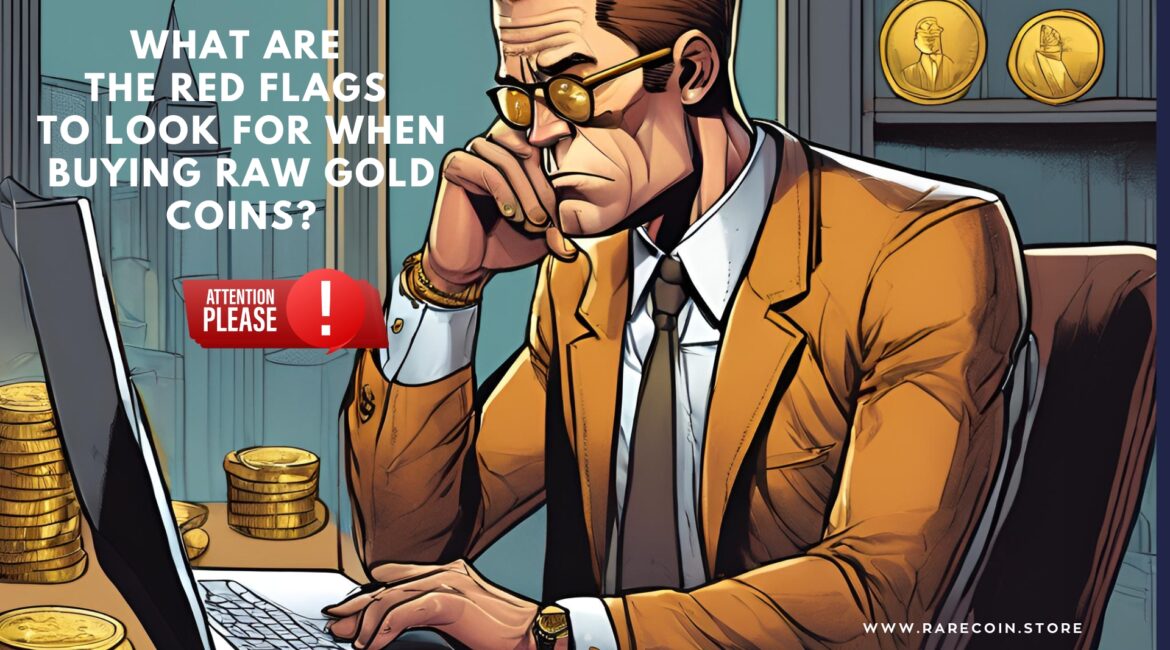Beware the Glitter: Red Flags to Spot When Buying Raw Gold Coins
Gold has fascinated humanity for centuries. Even today, ungraded gold coins remain a popular choice for investors and collectors. However, the market for these precious metals can be deceptive for beginners. Fraudulent sellers can take advantage of a lack of knowledge and offer counterfeit coins or inflated prices to unsuspecting buyers.
This article will give you the knowledge you need to operate safely in the ungraded gold coin market. By recognizing the warning signs, you can protect yourself from scams and ensure you get a fair deal.
Red Flag #1: Unknown or Unlicensed Sellers
Reputable dealers are transparent about their references. Look for established companies with a proven track record. They should be licensed by the relevant authorities and have memberships in international professional associations such as the American Numismatic Association (ANA) or the Professional Coin Grading Service ( PCGS ) or local/national associations or recognized comparison portals where reputable coin dealers are listed.
Avoid sellers who operate in temporary locations, use online marketplaces with limited seller history, or individuals who make offers that seem “too good to be true.”
Red Flag no. 2: Unrealistic prices
Gold prices fluctuate, but significant deviations from the spot price (the current market value of gold) should raise suspicion. Find out the current spot price and typical premiums for certain ungraded gold coins. If a seller offers a price well below market value, it is likely that the coin is fake or has hidden defects.
Red Flag #3: No possibility to check or test the coins
A reputable seller will allow you to thoroughly examine the coins before purchasing them. This includes inspecting for signs of wear, damage or changes that may reduce the value. Some sellers may even offer non-destructive testing methods to verify gold content. Be wary of sellers who pressure you to buy without allowing you to properly inspect the coins or who refuse to perform basic inspection procedures.
Red Flag #4: Lack of documentation or certification
For valuable ungraded gold coins, certificates from reputable grading service providers such as PCGS or Numismatic Guaranty Corporation ( NGC ) are essential. These certificates confirm the authenticity of the coin, assess its condition and guarantee weight and metal content. Avoid sellers who cannot provide documentation or whose certificates come from unknown or dubious grading service providers.
Red Flag no. 5: Selling pressure
Reputable sellers know how important it is to make informed decisions. They should be patient, answer your questions openly and give you time to consider your options. Be wary of sellers who pressure you to buy immediately, use fear-mongering, or make exaggerated claims about the coin’s potential value.
Protect your investment
By recognizing these warning signs, you can significantly reduce your risk of fraud. Here are some additional tips:
- Do your research: Familiarize yourself with the specific type of ungraded gold coin you are interested in, its typical market value, and common grading standards.
- Trade with reputable companies: Choose established dealers with a proven track record and positive customer reviews.
- Get everything in writing: Make sure you get a receipt that includes the coin’s description, weight, metal content, price, and any guarantees offered.
By following these steps, you can approach the ungraded gold coin market with confidence and make informed investment decisions that protect your hard-earned money.






